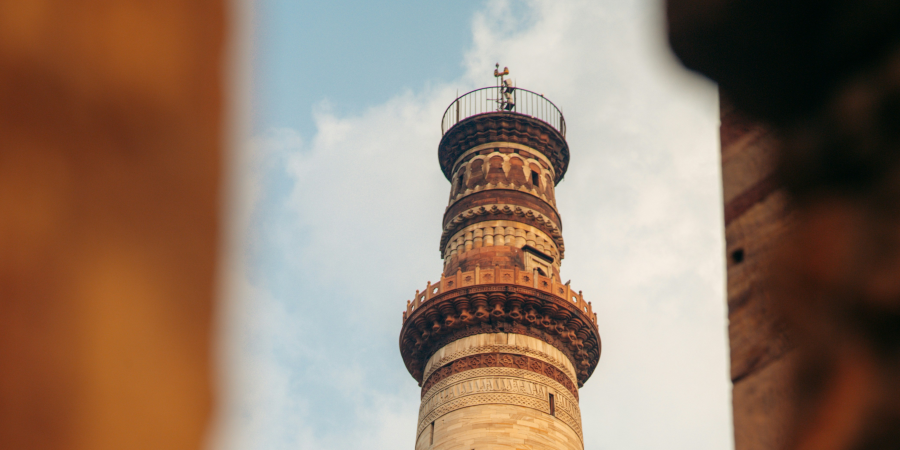

Qutub Minar (also spelled Qutub Minar or Qutub Minar) is a minaret and "tower of victory" that is part of the Qutub complex on the grounds of Lal Kot, Delhi's oldest walled city, founded by Tomar Rajput. It is a UNESCO World Heritage Site in the Meherauli district of South Delhi, India. Built mainly between 1199 and 1220, it has 399 steps and is one of the city's most visited tourist sites.
Qutab-ud-din Aibak started construction of Qutab Minar but managed to complete only the first level. Subsequent rulers continued construction and in 1368 Firuz Shah Tughlaq rebuilt the upper part and added a dome.
It can be compared to the 62-metre-tall brick minaret at Jam, Afghanistan, built some ten years before construction began on the Delhi Tower. The surfaces of both minarets are elaborately decorated with inscriptions and geometric patterns.
QUTB MINAR has a tree that is a rifle with excellent STAL milk stones under the balcony at the top of each step. In general, Minarettes were often used slowly in India and were separated from the existing main mosque.

In recent years, Quotub Minar has covered special cases related to international relations. In September 2023, a monument was illuminated by the color of the flag of Mexico to celebrate the 213rd day of Mexico's independence. This is an event recognized by the Indian Mexican Embassy in India.
Similarly, on October 30, the Qutub Minar was illuminated with the Turkish flag to commemorate the 100th anniversary of the Turkish Republic. This event attracted special attention from the Turkish Embassy in New Delhi.
Historically, minerals of the tower were rare in Asia, South Islamic Asia, South Islamic Asia, until the 17th century was slow to adopt a typical style in India. In addition, it is separated from major mosques, indicating how indigenous culture affected the design of the Middle East structure.
According to Ved Parkash in his essay "Qutub Minar from Modern and Early Modern Sources," the Qutub Minar is considered "the first and best example of a fusion or synthesis of Hindu and Islamic traditions." Like many mosques built in South Asia at the time, the minaret was built by Hindu workers and artisans, but under the supervision of Muslim architects.
The result was a design that integrated both Hindu and Islamic religious architecture. Some of the craftsmen were Hindu and unfamiliar with the Quran, so the inscriptions are a mishmash of Quranic text and other Arabic expressions.
Thanks For Reading…Do Follow, Like & Share


